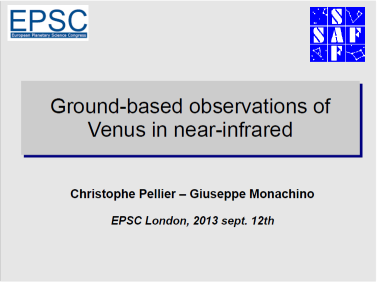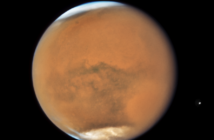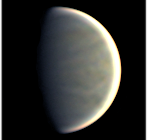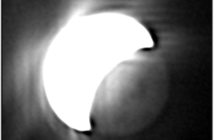Observing Venus is one of the most interesting planetary observations accessible to amateurs. The planet is mostly observed in violet and ultraviolet as these colors show the most contrasted details. However there is another fascinating wavelength that gives access to a different cloud layer and even to the surface of the planet : the near infrared. Here is the talk Giuseppe Monachino and I we have been presenting at the EPSC 2013 last month!
Summary of the conference: techniques and results
The PDF that you can download below is organized in 3 parts:
- A detailed presentation of the techniques used to observe the diurnal cloud layer of Venus in near IR: the equipment used, the imaging methods, and the processing methods.
- A presentation of the results obtained: the analysis methods, the calculation of the rotation of the atmosphere in IR: we find an average value of 4,9 days, one more day than the observed rotation length in UV.
- The last results obtained from the observation of the thermal emission from the surface at 1 micron, that confirm that the dark patches observed mark indeed the presence of the venusian mountains :)
Some perspectives for the coming months…
The current eastern elongation of Venus is very unfavorable to observers in the terrestrial northern hemisphere and the planet will remain low in the sky for them this fall – but those living in the south or closer to the equator can see it well! Note right now that from mid-december 2013 we will have another opportunity to image the surface of Venus at 1 micron, and this will be the last time before 2015 spring. The observing conditions will improve slightly for northerners at the end of the year. But I will talk about it on this blog shortly before :).
Download the other conferences from the pro/am session of the EPSC 2013!
Marc Delcroix has gathered on a page all the talks of this exceptional session.
Click here to see what are the most advanced works realized with our images!!
The PDF of the Venus talk: click on the image
Note: the animations from slide 5 do not work in PDF so here they are:






